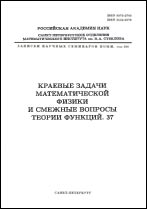|
|
Zapiski Nauchnykh Seminarov POMI, 2011, Volume 387, Pages 122–144
(Mi znsl4099)
|
 |
|
 |
This article is cited in 1 scientific paper (total in 1 paper)
Finite quantum models: constructive approach to description of quantum behavior
V. V. Kornyak
Joint Institute for Nuclear Research, Laboratory of Information Technologies, Dubna, Moscow reg.
Abstract:
Universality of quantum mechanics – its applicability to physical systems of quite different nature and scales – indicates that quantum behavior can be a manifestation of general mathematical properties of systems containing indistinguishable, i.e. lying on the same orbit of some symmetry group, elements. In this paper we demonstrate, that quantum behavior arises naturally in systems with finite number of elements connected by nontrivial symmetry groups. The “finite” approach allows to see the peculiarities of quantum description more distinctly without need for concepts like “wave function collapse”, “Everett's multiverses” etc. In particular, under the finiteness assumption any quantum dynamics is reduced to the simple permutation dynamics. The advantage of the finite quantum models is that they can be studied constructively by means of computer algebra and computational group theory methods.
Key words and phrases:
quantum behavior, invariants of symmetry groups, Born's rule.
Received: 30.11.2010
Citation:
V. V. Kornyak, “Finite quantum models: constructive approach to description of quantum behavior”, Representation theory, dynamical systems, combinatorial methods. Part XIX, Zap. Nauchn. Sem. POMI, 387, POMI, St. Petersburg, 2011, 122–144; J. Math. Sci. (N. Y.), 179:6 (2011), 702–713
Linking options:
https://www.mathnet.ru/eng/znsl4099 https://www.mathnet.ru/eng/znsl/v387/p122
|

| Statistics & downloads: |
| Abstract page: | 296 | | Full-text PDF : | 110 | | References: | 58 |
|




 Contact us:
Contact us: Terms of Use
Terms of Use
 Registration to the website
Registration to the website Logotypes
Logotypes








 Citation in format
Citation in format 
